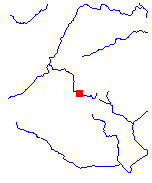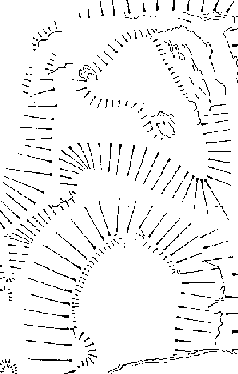Symon's Castle is a thirteenth-century timber and earthwork castle on the Welsh borders (Figure 1) which over a ten-year period has seen the total excavation of both the bailey area and the motte top (Arnold and Huggett, in prep. ). Like many castles of its type in the border area, it was of a fairly temporary nature, but unlike many of these earthwork castles it can be placed firmly within an historical and archaeological framework. Indeed, Symon's Castle can be placed within a medieval landscape centred on Henry III's castle at Montgomery and its earthwork predecessor at Hen Domen, itself the subject of a lengthy research excavation (for example, Higham and Barker 1992 , 326-47).


Symon's Castle was probably garrisoned for the first time by a knight called Symon de Parco in 1231. It was situated within an area of forest and beside the medieval road that would have carried supplies of timber and lime from the forest to the building works associated with the construction of the new royal castle at Montgomery. Once the royal castle was completed in 1233, Symon's Castle was handed over to the constable of Montgomery Castle and seems likely to have been abandoned shortly thereafter. Certainly the archaeological evidence is consistent with a castle that was built, occupied and abandoned within a five-year period and possibly much less. Consequently, excavation offered the chance to look at a snapshot of life within a small medieval castle which had been undisturbed since its abandonment.

A typical motte and bailey consists of an earthen motte cast up from spoil from the surrounding ditch with an enclosed bailey to one side at ground level. However, Symon's Castle consists of two rock outcrops or platforms, separated by a (probably natural) ditch (Figure ()). The southern-most outcrop was partially removed by a stone quarry, but had a penannular clay bank around its uppermost perimeter � the northern outcrop had no surface features visible. The northerly platform is usually referred to as the bailey and the southern platform as the motte, and their layout with respect to each other would seem to support this identification. Despite this, the fact that Symon's Castle is structurally geological with only minor human modifications or enhancements, and that both 'motte' and 'bailey' are at broadly the same height has led the excavators to argue that it is more properly an incomplete ringwork (Arnold and Huggett, in prep. ). Nonetheless, the labels 'motte' and 'bailey' are conveniently applied to the two main areas.
©Internet Archaeology
Last updated: Mon 19 June 2000
URL: http://intarch.ac.uk/journal/issue8/huggett/jhintrosc.html